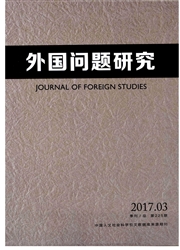

 中文摘要:
中文摘要:
近世初,丰臣政权和德川幕府及其下属各领国的封建大名在全国范围内较集中地进行了各自领国都城城下町的建设,并展开一系列经营活动促选其繁荣发展,努力将其经营成为领国经济的中心。在当时的时代背景下,城下町的经营可以说既是一种领国都城的建设经营举措.同时也是各封建领主促进商农分离积极对领国内的商业和手工业进行统制利用的行为。通过城下町的经营,领主较全面彻底地掌握了领国内物资的生产和流通,确立并维持了领国独立的经济圈,加强了对领国经济的统治。
 英文摘要:
英文摘要:
In the early modern times,Toyotomi Hideyoshi regime and Tokugawa Shogunate, as well as those subordinate feudal lords under their control, concentrated on the castle towns' ( the capital of the fief) construction all over the country. With a series of plans implemented, they intended to develop those castle towns into the prosperous and bustling centre of the fief economy. Historically speaking, the management of castle towns aims at both the construction of the fief capitals and the controlling of trade and handicraft within the fief by accelerating the separation of traders and peasants. With the development of castle towns, the feudal lords in modern times were able to control the exchanges of commodities in their fiefs. They consequently maintained the economic independence and strengthened the economic domination in their fiefs.
 同期刊论文项目
同期刊论文项目
 同项目期刊论文
同项目期刊论文
 期刊信息
期刊信息
